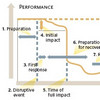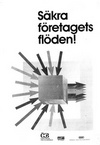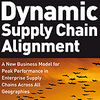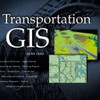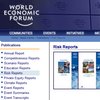 A missed classic? Perhaps, because after reading this article I realized that this in many ways is a seminal paper. Rachel Mason-Jones and Dennis Towill are not unknown to me, and I’ve come across their names time and again, but this is probably the first time I delved more deeply into their research and their journal articles. Their 1998 paper Shrinking the Uncertainty Circle is one of the articles – if not the article – that paved the way for many frameworks for risks in supply chains, most notably the supply-demand-process-control model found among Martin Christopher and his followers.
A missed classic? Perhaps, because after reading this article I realized that this in many ways is a seminal paper. Rachel Mason-Jones and Dennis Towill are not unknown to me, and I’ve come across their names time and again, but this is probably the first time I delved more deeply into their research and their journal articles. Their 1998 paper Shrinking the Uncertainty Circle is one of the articles – if not the article – that paved the way for many frameworks for risks in supply chains, most notably the supply-demand-process-control model found among Martin Christopher and his followers.
Off track…again
As with many of my previous discoveries, one article in one reference list leads to another article in another reference list, and I end up reading all other articles but the one I first sat down to read. It started with my previous review of Sanchez-Rodrigues et al.(2008) and transportation uncertainties in supply chains, where Mason-Jones occurs no less than 4 times. What really got me interested though was their redraw of the original figure below, where Mason-Jones and Towill (1998) describe the four sources of supply chain uncertainty:
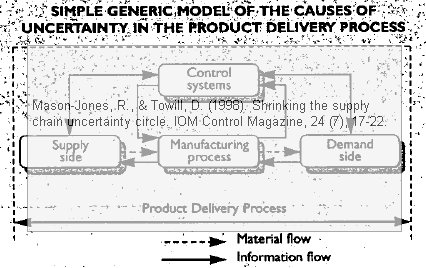
Uncertainty in supply, uncertainty in demand, uncertainty in manufacturing and uncertainty in control and decision-making. Now, this looks very familiar, doesn’t it? Where have I/you seen it before?
Uncertainty or risk?
Correctly, it occurs in the same or similar shape in many papers on supply chain risk, most notably perhaps in Martin Christopher’s book chapter on supply chain risk, and also in many of his papers. And interestingly, if you replace the word “uncertainty” in this article with the word “risk” it becomes an article on supply chain risk rather than supply chain uncertainty, which goes to show how closely linked uncertainties and risks actually are.
Shrink, shrank, shrunk
The shrinking of the uncertainty circle is a visually incredibly appealing concept. First, the focal company in any supply chain can only do so much, and while supply and manufacturing uncertainty can be improved via e.g. lean thinking, demand and control uncertainties may still remain as high as before. However that is compensated for by strict control of manufacturing and supply, such that the overall uncertainty decreases, hence the smaller circle. Second, by improving demand through an integrated informations system that runs the whole length of the supply chain, these uncertainties can be significantly reduced, too:

The concept of visualizing the amount of uncertainty by the size of a circle is somewhat reminiscent of the vulnerability matrix developed in the New Zealand research project Resilient Organisations.
Supply chain visibility
If you look at the figure below, illustrating how information is transferred through the supply chain, in a traditional supply chain versus an “enriched” supply chain, as they call it, it does remind me of the flow described as vendor-managed inventory in Wilson (2007).

Instead of (traditionally) every link in the chain making separate orders based on the internal sales data only, in the enriched supply chain every echelon can make an assessment based on the full data available from every party in the overall supply chain, thus eliminating uncertainty caused by material and information flow delays.
Conclusion
It is interesting to not how the authors advocate lean thinking as the means for reducing the uncertainty the manufacturing and supply, which I guess is a sign of the Zeitgeist it was written under. However, as we know now, lean isn’t always the best strategy. Increased visibility and information sharing on the other hand, is truly timeless.
Reference
Mason-Jones, R., & Towill, D. (1998). Shrinking the supply chain uncertainty circle IOM Control Magazine, 24 (7)
Author links
- glam.ac.uk: Rachel Mason-Jones
- cf.ac.uk: Dennis Towill
Download
Daniel Stengel of the SCRM Blog has dug up a link from where the paper can be downloaded in full.
- scrmblog.com: The Supply Chain Uncertainty Cycle
Related
- husdal.com: Transportation-focused supply chain uncertainty

